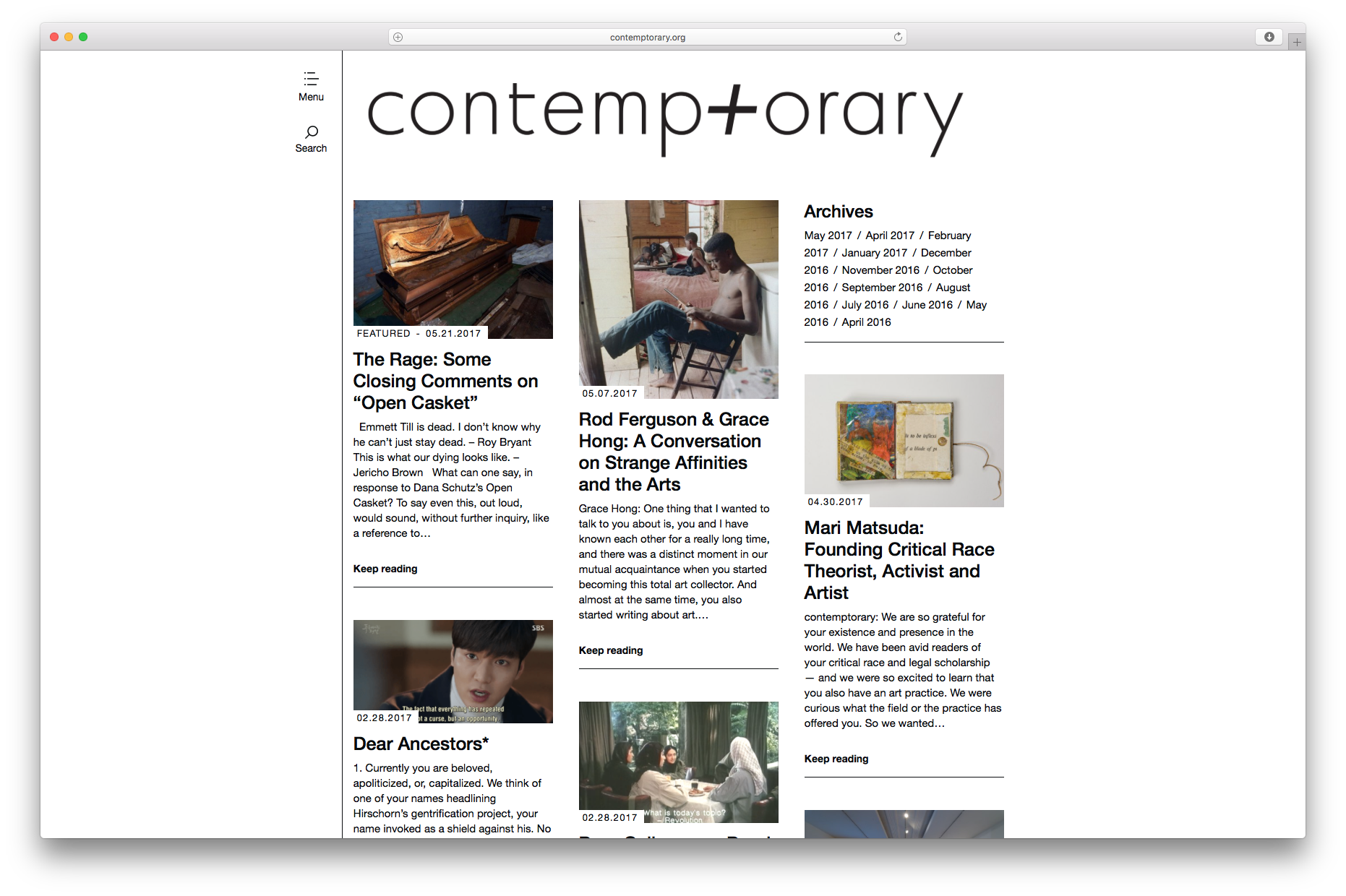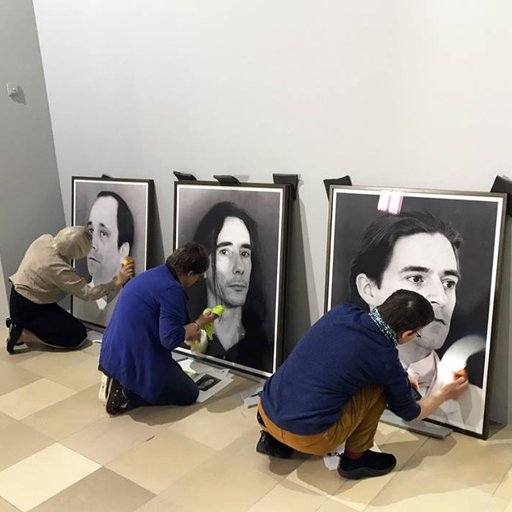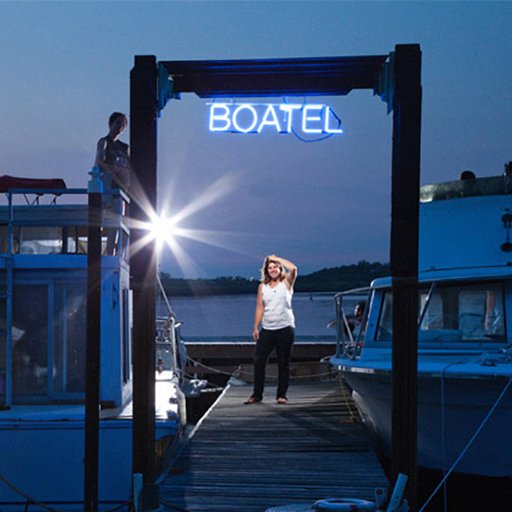Artists have always written about art. And, like other writers in recent years, the internet has provided them a platform to do so outside of entrenched media. Websites like Brett Baker’s Painters’ Table have developed an audience by curating myriad artist-run blogs managed throughout the years. And yet, Greg Allen of greg.org observed, “So many of my go-to artist-blogs ended in 2015.”
According to Sharon Butler , the artist behind the long-running Two Coats of Paint , social media has provided a democratic platform for artists to talk about art, and many would-be bloggers have made their homes there. “Now that artists tend to congregate on social media platforms like Facebook and Instagram to discuss their work and ideas, they aren’t starting as many blogs as they used to,” Butler tells Artspace . In fact, many of the artists recommended for this list post through Tumblr (Paul Soulellis and many others) and Instagram (Teju Cole).
But this opening of the dialogue has also provided some opportunity for historically marginalized voices to entrench themselves in more mainstream discourse. Many newer blogs emphasize specific perspectives. ARTS.BLACK , launched in late-2014, publishes writings by critics of African descent; contemptorary told Creative Capital Blog they publish work on and by “women of color, queers of color, indigenous and political refugee artists.”
From each publisher, we wanted to know four things: What called them to write about art? What do they tend to write about? What’s the most important thing for art writers and critics to be writing about today? And what artist blogs do they read themselves? This last question we used as an opportunity to expand the survey, hopefully giving a fuller view of the field of artist blogs, rather than limiting the perspective to that of one or two editors. In addition, we asked each publisher what they believed to be the most important topic for art writers and critics to be talking about today. Those answers, because of their immediacy, are included in their entirety.

Two Coats of Paint is among the most-established artist-run blogs, having been sponsored at various points by museums like the Guggenheim and Whitney , and schools like SVA and RISD. It received a Creative Capital/Warhol Foundation Arts Writers Grant for blogging in 2013. Sharon Butler told Artspace that she began Two Coats of Paint in 2007 when she “returned to painting after spending a couple years working on installations and digital projects.” At that early stage, it was structured as a digest format, sharing links to painting criticism Butler read online, but soon expanded into original writing and began a residency in 2015. Two years ago, Butler also began commissioning contributions by other artists and writers following a fundraising campaign and instating modest ads on the site.
As the name suggests, “ Two Coats of Paint is primarily about painting,” Butler said. However, she noted, “I have a broad definition of what painting might be. I try to publish posts that put the work into a cultural or political context. What do recent paintings reflect about our circumstances?” For Butler herself, who maintains an active studio practice as a painter, this often means writing about “the intersection of painting and other media, and digital influence.”
Begin With:
Butler noted that “
Two Coats
produces a variety of posts: studio visits and interviews with painters, exhibition reviews, a gallery guide, short stories about art and artists, film reviews, reading links, catalogue essays, email correspondences, and more.” Here’s a sample platter:
Catalogue essay: Raphael Rubinstein on Drew Shiflett
(June 21, 2017)
Email: Daniel Wiener on art in fiction
(June 20, 2017)
Medrie MacPhee: Flat-out at Tibor de Nagy
(June 17, 2017)
Art and Film: Wajda’s final word on art and politics
(June 2, 2017)
A studio visit with Sascha Braunig
(December 29, 2016)
What’s the most important topic for art writers to be covering today?
“Artists and writers must respond to the world around them. With the Trump presidency, our country is in the middle of a constitutional crisis. We are surrounded by ‘alternative facts,’ political corruption, treasonous leaders, and other serious threats to democratic principles. Everything I have been writing has been filtered through that lens since the election.”
Eunsong Kim & Gelare Khoshgozaran

Contemptorary —note the extra “t”—is a collaborative project co-run by Eunsong Kim and Gelare Khoshgozaran, that emphasizes the idea of “contempt” as “a commitment to clearing the horizon for necessary ruptures.” In practice, this makes for pointed, iconoclastic writing that’s frequently, by necessity, uncomfortable—exactly what good criticism should be. Kim began publishing art criticism in 2013, after coming to art from literary and cultural studies; Khoshgozaran began writing about art in 2006 while translating articles, essays, and books of art history and criticism in Iran. The two met online in 2014 and launched contemptorary in 2016.
Focusing on essays and interviews, contemptorary publishes thematically curated issues—the first feature was themed “freedom = oppression”—and will soon begin organizing symposiums, print issues, and exhibitions. This format, contemptorary told Artspace , allows them to avoid contributing to “the economy that out-of-context exhibition reviews create.” Publishing writings both individually and co-authored—as well as commissioned contributions—the duo said they’re “interested in difficult questions that don’t necessary have a clear answer or may not be resolved in one or two think pieces.” Recently, this has led them to “think a lot about art and finance, archives, digitization and technology, and the thoughtful and subversive ways some artists and thinkers have engaged in those practices.” Contemptorary was awarded a Creative Capital/Warhol Foundation Arts Writers Grant for blogging in 2015.
Begin With:
The Freedom to Oppress
(April 19, 2016):
Contemptorary
told
Artspace
that this 2016 essay by Kim and Maya Mackrandilal is exemplary of the kind of criticism they aim to publish. In it, the authors “take up how the word ‘freedom’ has been used in art to protect the violences found in the gestures of white male artists.”
Mari Matsuda: Founding Critical Race Theorist, Activist and Artist
(April 30, 2017)
Dear Colleagues, Dead or Alive*
(February 28, 2017)
What’s the most important topic for art writers to be covering today?
“We hope we can continue to discuss power, and what the discourse of power has meant in visual and cultural production. We find that there’s a tradition of art criticism and art writing that works to evade art’s relationship to power. For example, why are art writers going out of their way to depoliticize George Bush by politicizing his portraiture paintings? The relationship between portraiture paintings and state rulers has a historical continuum. The practice of art, the gesture toward expression, does not absolve us from the political positions we’ve taken, participate in actively or passively, or advocate. It has always been essential for us to pressure the tissues between expression and power—but now more than ever. This might mean that everything is racialized, gendered—we mean everything. Perhaps there can be more writing on the ‘Minimalist Brotherhood’ that can address its whiteness, hyper-masculinity, and access in relation to the usage of steel materials. Maybe this might mean that historical writings on Marcel Duchamp center his whiteness to re-read the entire historical formation of found object art. Just some thoughts we’ve had, projects we want to work on, putting them out there in case others want to participate.”
Taylor Renee & Jessica Lynne

Neither Taylor Renee nor Jessica Lynne are artists, but ARTS.BLACK was consistently recommended by the publishers of other artist-run blogs. Renee, a Detroit-based writer and curator, and Lynne, a Brooklyn-based writer and arts administrator founded ARTS.BLACK in 2014, dedicated to publishing art criticism from Black perspectives. “As we entered the cultural workforce and encountered conversations about equity,” Lynne told Artspace , “we immediately began to realize that the world of arts journalism and writing also needed to be included in such conversations. At the same time, we were keenly aware of the rich lineage of Black cultural criticism as well as a contemporary crop of black writers who deserved to be published more consistently—we counted ourselves as part of that group.”
ARTS.BLACK has recently reduced the number of texts it publishes to two a month, which they said allows them to maintain a level of thoughtfulness and rigor. “As a journal, we prioritize and publish the writing of critics of African descent,” Lynne said. “That mission is deeply important to us, however aside from that, we don’t place restrictions on our contributors’ writing.” As such, essays and interviews touch on painting, photography, film, poetry, and everything in-between.
Begin With:
Alive Someplace Better: EJ Hill’s Horizontal Poetics
(August 5, 2015): Amber Officer-Narvasa writes that the work of EJ Hill, a former resident of
the Studio Museum in Harlem
, “encourages us to think about how to represent Black pain in a way that doesn’t compromise Black humanity, how to understand own our wounds without having them define us.”
In Conversation with Naima Green (March 2, 2016)
What’s the most important topic for art writers to be covering today?
“On a basic level, we want critics to think about the ways in which art and cultural production, more broadly speaking, offers us new questions and language for thinking about the complexities of the world, complexities that have always been present.”
Greg Allen

Washington, D.C.-based artist and filmmaker Greg Allen told Artspace that when he first began blogging at Greg.org in 2001, it wasn’t particularly limited to art. Today, Allen says he still writes about a variety of inspirations and interests, but at a certain point, writing about contemporary art “eventually just subsumed everything else.” Declining to cement an editorial direction, he continued, “I usually write about what I don’t see, or what I want to see. I go digging through archives, or do interviews or historical research, trying to solve art history mysteries. I like to find out how an artwork was made, or why; but I’m also fascinated by art that gets lost, stolen, destroyed, or forgotten.” In addition, Allen also blogs about his own projects; in April, Artspace covered Allen’s project commissioning ironic paintings of the Trump family . Greg.org: The Making Of was awarded a Creative Capital/Warhol Foundation Arts Writing Grant in 2010.
Begin With:
If He Did It
(December 5, 2012): Veering toward more conspiratorial corners of the blogosphere, Allen’s recounting of the theory that Richard Prince
actually
painted Bob Dylan’s exhibited works is a charming and oddly enlightening read. Regardless of the theory’s merit, Allen traces the path of Prince’s influence on the way Dylan’s work is presented: “The key to Dylan’s show is to be found here, in the reality gap between how something is ‘billed’ or presented, and how it is received.” The same year, Allen published
Canal Zone Richard Prince YES RASTA…
, a transcript of Prince’s seven-hour deposition, which Allen describes as “the longest interview he’ll ever give.”
Untitled (Andiron Attributed to Paul Revere Jr.), 2014
(January 14, 2015)
Part 1
and
Part 2
of the Bernard Madoff Provenance Project
What’s the most important topic for art writers to be covering today?
“It’s so hard to say what someone else
should
be writing about, especially an artist. It really depends on their practice, and how they get their important stuff done, whether it’s making or thinking. It’s just as likely that someone would turn to writing as a respite from the political and social imperatives of the day as they would use it to further their causes or build their communities. That said, part of me is also, ‘All hands on deck!’ these days, too, so…”
Brett Baker

When Painters’ Table began in 2010, it was a private site containing bookmarks to writing on painting. “After about a year,” Brett Baker told Artspace , “I realized other people might like access to it as well, so I made it public and started updating it daily.” That humble desire to share “what resonates” with Baker still pervades Painters’ Table today, which publishes original reviews and links to writing at other publications that are “intended to provide a broad overview of trends in contemporary painting by linking out to a wide variety of content—from reviews of large retrospectives garnering attention in the mainstream press to artists interviewing each other in their personal blogs.” In all cases, Baker looks for writers who approach art with a personal sensibility, writing about shows that speak to them or relate to their own work, as opposed to merely covering an assignment.
Begin With:
Baker recommended new readers of
Painters’ Table
get started just by visiting the
homepage
. Original reviews are directly below link posts, and “Browse Blogs” will bring up a roll call of all the publications featured in the site.
What’s the most important topic for art writers to be covering today?
“I think it’s not so much a question of what critics should cover as how they should cover it. So many people today experience art via Facebook and Instagram, which isn’t the same as being in the gallery or the museum or the artist’s studio. Those of us writing about art have a tremendous opportunity to put our direct experience of the art into words. The art writing I love the most conveys something about what it’s really like to be there and look at the work.”
Cathy Quinlan

Cathy Quinlan began writing about art after reading Robert Benchley’s theater reviews early in the New Yorker ’s history. “He knows a lot,” Quinlan said. “He’s specific and honest, and he’s funny.” In 2016, Quinlan started Talking Pictures , a publication of writings by herself (under the vertical “What Meets the Eye”), Martina Siebert (“The Defeatist”), Barbara Epler (“Misc.”), and Adam Simon (“Parables”).
Begin With:
Beyond Courtyards (100 Years)
(May 24, 2017)
Brent Ridge draws Terry Winters at the Museum of Fine Arts Boston
(January 7, 2017)
Pleasure and Pain: Kerry James Marshall’s “Mastery”
(November 30, 2016)
What’s the most important topic for art writers to be covering today?
“I think it would be more interesting if art critics disagreed with each other more often. The vitriol bothered me, but the discussions around Dana Schutz’s ‘Open Casket’ were fascinating.”
Brian Dupont

Brian Dupont began writing about art while his painting practice was undergoing a major change. “Writing became a way to process what I was seeing,” he said, “and assess how it affected what I was working through in the studio. I naturally branched out to consider broader critical concerns as what I was writing engaged in broader aesthetic discourse. This was helped as the new work I was making fell into step with concerns about appropriation in art.”
Although currently on hiatus since December while Dupont focuses on his studio practice, the prose-heavy Artist’s Texts will return soon with “more topical criticism.”
Begin With:
“Out of Time” series:
Part 1
,
Part 2
, and
Part 3
. In this three-part essay, Dupont examines how “a good deal of criticism hinges not on the work but on how it is being made and who is buying it.” In doing so, “there is a real danger that art may eventually lose the individual spark that makes it more than mere commodity.” Rather than purely lamenting this state, Dupont notes that “the artist must be acutely aware of what s/he stands for, and how they relate to the shifting context that surrounds their work lest they loose control of it… This is the cost of the freedom wished for by artists in bygone eras.”
What’s the most important topic for art writers to be covering today?
“Writers and critics that cover communities should be writing in a way that examines the structures that form the base of support for these communities. In New York, where I live, too much of the coverage immediately trends to blue chip and economic coverage without covering the base. Emerging and young galleries really have to struggle for coverage, as do (as ever) spaces run by and focusing on minority artists.”
Sarrita Hunn and James McAnally

Though writing has always been a part of artists Sarrita Hunn and James McAnally’s artwork, they didn’t start Temporary Art Review until they felt moved by the “lack of rigorous criticism around artist-run and artist-centric practices in most communities throughout the US and, as we found, internationally.” Their solution? To cover the ways that artists are supporting one another “through alternate economies, apartment galleries, complex conversations, dissent and disagreement, and an unending list of other engagements.’”
Begin With:
The most concise account of
Temporary Art Review
’s approach is this adapted text from their recent book,
To Make a Public
.
Hunn and McAnally also recommend Slow Criticism: Art in the Age of Post-Judgement by Anya Ventura, and No one cares about art criticism: Advocating for an embodiment of the avant grade as an alternative to capitalism by Steven Cottingham
What’s the most important topic for art writers to be covering today?
In a time of crises writ large, a primary tendency in the art world is to be reactionary and insist only on resistance. The most important task for a critic today is not just to diagnose failures but to actively reimagine alternatives. For us writing in and around art in particular, this means writing towards a more radical vision for institutional forms and futures, as well as an intentional reaching back into past legacies and ahead for more speculative possibilities. Instead of writing what we know, we think it is time to write towards the unknown. Referencing Brecht, “politics is [criticism’s] continuation by other means” - if politics is the continuation, then perhaps criticism can be a beginning.
HONORABLE MENTIONS: Contemptorary , Chicago Artist Writers , Post-Office Art Journal , Eutopia , The Chart and DIRT
























